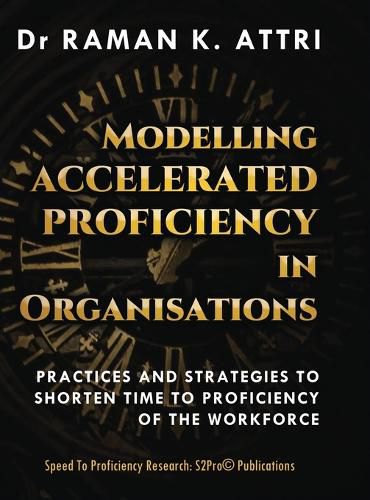Readings Newsletter
Become a Readings Member to make your shopping experience even easier.
Sign in or sign up for free!
You’re not far away from qualifying for FREE standard shipping within Australia
You’ve qualified for FREE standard shipping within Australia
The cart is loading…






This title is printed to order. This book may have been self-published. If so, we cannot guarantee the quality of the content. In the main most books will have gone through the editing process however some may not. We therefore suggest that you be aware of this before ordering this book. If in doubt check either the author or publisher’s details as we are unable to accept any returns unless they are faulty. Please contact us if you have any questions.
This book presents a research thesis of a large-scale study conducted with over 50 large organizations in 7 countries with 80 business leaders to understand how businesses speed up the proficiency of their employees to meet business challenges. The book describes a start-to-end research study that explored the concept of ‘accelerated proficiency’ of employees in organizations. The book is organized into five chapters. The book introduces the concept of accelerated proficiency in a business context in light of reviews of four decades of classic studies. The research methodology to identify sources, recruit participants, and the mechanism to collect as well as analyze data have been explained in detail. The book reveals six business practices implemented by organizations across the board that seem to make a major impact in shortening the time to proficiency of employees. Important observations and findings have been discussed as implications in regards to how organizations orchestrated six business practices as an input-output-feedback system to reduce the time-to-proficiency of the workforce. The book briefly explains how these six practices were implemented through a set of twenty-four strategies in various contexts. The concepts and findings discussed in this book contribute significantly to the body of knowledge on accelerated proficiency. In particular, the conceptual model and the framework developed in this study can be implemented across a range of contexts, business sectors, job types, and settings to reduce the time-to-proficiency of the workforce.
$9.00 standard shipping within Australia
FREE standard shipping within Australia for orders over $100.00
Express & International shipping calculated at checkout
This title is printed to order. This book may have been self-published. If so, we cannot guarantee the quality of the content. In the main most books will have gone through the editing process however some may not. We therefore suggest that you be aware of this before ordering this book. If in doubt check either the author or publisher’s details as we are unable to accept any returns unless they are faulty. Please contact us if you have any questions.
This book presents a research thesis of a large-scale study conducted with over 50 large organizations in 7 countries with 80 business leaders to understand how businesses speed up the proficiency of their employees to meet business challenges. The book describes a start-to-end research study that explored the concept of ‘accelerated proficiency’ of employees in organizations. The book is organized into five chapters. The book introduces the concept of accelerated proficiency in a business context in light of reviews of four decades of classic studies. The research methodology to identify sources, recruit participants, and the mechanism to collect as well as analyze data have been explained in detail. The book reveals six business practices implemented by organizations across the board that seem to make a major impact in shortening the time to proficiency of employees. Important observations and findings have been discussed as implications in regards to how organizations orchestrated six business practices as an input-output-feedback system to reduce the time-to-proficiency of the workforce. The book briefly explains how these six practices were implemented through a set of twenty-four strategies in various contexts. The concepts and findings discussed in this book contribute significantly to the body of knowledge on accelerated proficiency. In particular, the conceptual model and the framework developed in this study can be implemented across a range of contexts, business sectors, job types, and settings to reduce the time-to-proficiency of the workforce.